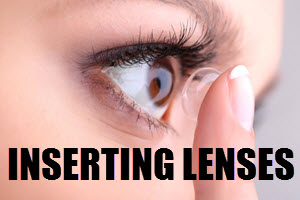Introduction
Decorative eye lenses, also commonly referred to as cosmetic or colored contact lenses, have surged in popularity over recent years. This trend is largely due to their notable ability to enhance or transform the natural appearance of one’s eyes. With a broad array of colors and designs available, these lenses cater to both subtle enhancements and dramatic transformations, resonating with a diverse audience.
For those who own decorative eye lenses, understanding and implementing proper cleaning and storage methods are critical. These practices are not only essential for maintaining optimal eye health but also for extending the life and safe usability of the lenses.
Why Proper Maintenance is Necessary
Wearing decorative eye lenses without appropriate maintenance can pose several risks. Neglecting cleanliness and correct storage can lead to various complications such as eye infections, irritation, and potentially severe long-term vision problems. It is imperative to emphasize that proper care of these lenses is indispensable. By adopting consistent and correct lens maintenance routines, users can ensure their decorative lenses remain both comfortable and safe for extended use.
Cleaning Decorative Eye Lenses
One of the foundational steps in maintaining decorative lenses is knowing how to clean them effectively. Cleaning protocols may vary slightly based on the specific material from which the lenses are made, highlighting the importance of referring to the manufacturer’s guidelines. Here is a foundational approach:
Begin the process by thoroughly washing your hands with soap and water. Ensuring clean hands is fundamental as it prevents the transfer of debris and bacteria onto the lenses. Following the wash, dry your hands using a lint-free towel to avoid any fibers adhering to the lenses.
Once your hands are clean and dry, carefully remove the lens from your eye and place it in the palm of your hand. Proceed to apply a few drops of a recommended contact lens solution onto the lens. With the lens in your palm, gently rub it with your index finger using a circular motion for approximately 20 seconds to remove any surface deposits. Next, rinse the lens thoroughly with the solution to ensure all debris is effectively removed.
Choosing the Right Solution
Contact lens solutions vary significantly, making it vital to select the appropriate one for your lenses. The solution recommended by either your eye care professional or the lens manufacturer is always the best choice. When choosing a solution, focus on disinfecting solutions tailored specifically for soft lenses. These are effective in removing debris and eliminating harmful microorganisms, which is crucial for maintaining lens hygiene.
Storing Decorative Eye Lenses
Equally important as cleaning is the proper storage of decorative lenses. Once the lenses have been cleaned, they should be stored in a clean lens case filled with fresh contact lens solution. This step prevents the accumulation of bacteria, which can compromise both the lens material and your eye health.
Regular replacement of your lens case is essential to prevent bacterial build-up – ideally, this should occur every three months. Employing this practice ensures that the case does not become a breeding ground for bacteria over time.
Key Storage Considerations
When storing lenses, it is important to avoid using tap water. Tap water may contain bacteria and other potential pathogens, which could lead to infections. Instead, always store your lenses in a solution specifically designed for this purpose.
Lenses should be stored in a cool and dry location. Additionally, exposure to direct sunlight should be avoided, as this can degrade the material of the lenses over time. Following these storage considerations help ensure the integrity of the lenses is maintained.
Additional Tips
While the daily cleaning and proper storage routine are core components of lens maintenance, other practices can further enhance lens safety. Always adhere to the recommended duration for wearing your lenses, and remove them before sleeping unless the lenses are explicitly designed for overnight use. This minimizes irritation and promotes eye health.
Regular eye examinations are also a prudent practice. These check-ups ensure that your eyes remain healthy and that the lenses are not causing any unforeseen issues, allowing for the continuous safe use of decorative lenses.
Conclusion
Maintaining both the cleanliness and appropriate storage of decorative eye lenses is indispensable for preserving eye health and ensuring the longevity of the lenses. By implementing these guidelines diligently, you can enjoy a safe and comfortable experience with your decorative lenses. Should you have any additional questions or need further clarification, it is always recommended to consult with an eye care professional.



 Cosmetic contact lenses
Cosmetic contact lenses